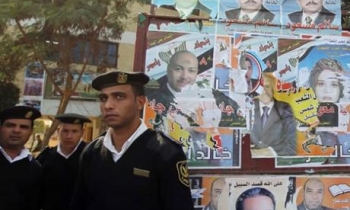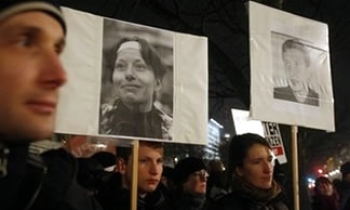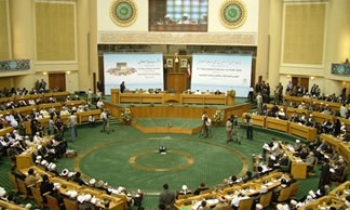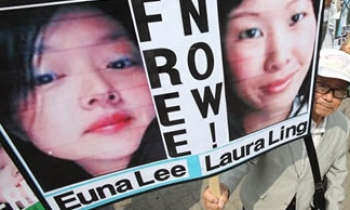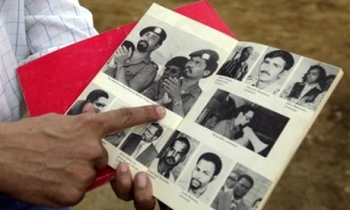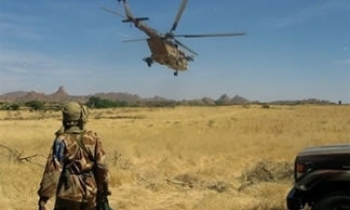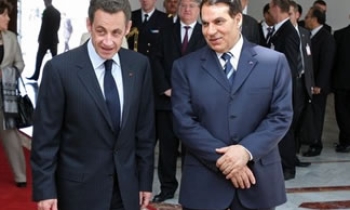Ability to report freely has become a casualty in the ongoing battle for control over Gaza between rival Hamas and Fatah groups. From raids on news establishments and rampant abductions of journalists, to use of Press markings on vehicles by combatants, all have made reporting riskier than before in a conflict that draws some of the world's most intense media coverage.
Dozens of armed members of the Ezzedine al-Qasam Brigades, the armed wing of Hamas, overran the Palestine Broadcasting Corporation (PBC) office next to the presidential palace at dawn June 15, cutting short broadcasts, according to Reporters sans Frontières (RSF). The few journalists still on the job fled. Equipment and archives were ransacked. Two days earlier, the PBC broadcasting centre was destroyed by Hamas fighters. Two PBC technicians were held hostage for several hours after being released.

The studios which relayed the official pro-Fatah Voice of Palestine Radio were set on fire on June 14 putting a stop to its broadcasts in the Gaza Strip. Two other radio stations — Voice of Youth and Voice of Freedom — also stopped broadcasting after their offices in the Al-Chorouk building in the northern part of Gaza City, were overrun by gunmen. Equipment was destroyed. Al Amal, mouthpiece of the Union of Workers, also suffered the same fate.
RSF reacted, “We fear the ability of journalists to work in the Palestinian Territory has been dealt with a severe blow by the catastrophic events of the past few days in the Gaza Strip. The Hamas attacks on broadcast media that support the Palestinian Authorities are unacceptable. We call on Prime Minister Ismael Haniyeh to have the broadcasting premises of these media evacuated and to let them resume broadcasting.” Since the statement was issued, however, Haniyeh's government has been dismissed by President Mahmoud Abbas.
Hamas gunmen also entered the offices of the Palestinian Journalists Syndicate (PJS) on Saturday and seized documents and computers. “The targeting of Gaza’s journalists only reinforces fears for the safety of media staff and underscores the threat to free reporting in the turmoil that is overwhelming the region," said Aidan White, International Federation of Journalists (IFJ) General Secretary.
“These actions place journalists in the mix of the conflict and amount to unacceptable intimidation,” said White. “We need urgent actions by all sides in this dispute to guarantee the safety of journalists and to protect their right to report freely.” Earlier, IFJ welcomed the release on Saturday of Tawfiq abu Khousa, a PJS leader who had been among people rounded up by Hamas gunmen. PJS is an affiliate of IFJ.

Journalists have historically operated unhindered in Gaza. But over the past two years, numerous foreign reporters in the chaotic territory have been kidnapped by militants and subsequently released. Today, Gaza is an incredibly dangerous area for both local and foreign journalists.
Journalists have also been caught in the crossfire of shooting attacks between Palestinian groups and between Palestinian and Israeli forces, though none have been killed this year. BBC correspondent Alan Johnston has been held for three months after being abducted by gunmen on March 12. His is the latest in a series of kidnappings in Gaza in the last year.
Johnston, 45, was the only Western journalist living in Gaza when he was abducted March 12 by gunmen suspected to be members of the Army of Islam. The shadowy group appears to draw inspiration from al-Qaeda, and has been linked to violent clan rivalries among Gaza's 1.5 million people.
Moreover, charges that press cover has been abused by combatants have arisen periodically in a conflict that draws some of the world's most intense media coverage, an Associated Press (AP) report said. In two recent incidents, Palestinian security officials said militants used cars with press markings to transport weapons. Palestinians have also accused undercover Israeli troops of using press vehicles to move around Palestinian areas, an allegation Israel has denied.
During recent fighting in the Gaza Strip, armed Palestinian groups committed serious violations of international humanitarian law, in some cases amounting to war crimes, Human Rights Watch (HRW) has said. The use of press vehicles by Palestinian gunmen to aid their plans of capturing Israeli soldiers set alarm bells ringing for journalists working in the conflict zone.

On June 9, four armed Palestinians drove a white jeep bearing “TV” insignias to a fence on the Gaza-Israel border and fired at Israeli soldiers. The Israelis returned fire, killing one Palestinian. Spokesmen for Islamic Jihad and the Al-Aqsa Martyrs Brigade, an offshoot of Fatah, claimed responsibility for the attack. An Islamic Jihad spokesperson denied that Palestinians had put press markings on the jeep used in the June 9 attack, and accused the Israeli military of doing so after the incident. However, photos taken by the Associated Press (AP) as the attack was under way showed the letters “TV” written in red on the front of the jeep.
Customary international humanitarian law provides that journalists not taking direct part in hostilities in armed conflict zones “shall be considered as civilians.” The deliberate abuse of this protected status in order to breach the confidence of an adversary in an attempt to kill, injure or capture them, does amount to an act of perfidy, a serious violation of international humanitarian law.
According to Sarah Leah Whitson, Middle East Director for HRW, “Using a vehicle with press markings to carry out a military attack is a serious violation of the laws of war, and it also puts journalists at risk. All in all a bad situation has been made worse by this latest incident.”
IFJ General Secretary White said, “This reckless attack will put all reporting on the conflict in danger. It also reinforces the cynicism that Israeli forces and authorities display in their treatment of honest and professional Palestinian journalists.” By making them suspect in the eyes of the Israeli army, this attack is certain to multiply the hazards for Gaza journalists, who already face intimidation from Palestinian militant groups.
Many are fearing that such incidents would provide Israeli soldiers the legitimacy to kill Palestinian journalists at will. PJS said in a statement, "The use of vehicles that carry 'Press', 'TV' or other signs expose journalists' lives to danger, gives the Israeli occupation a pretext to target and kill journalists; and restricts their ability to perform their professional and national duties."
The Israel-based Foreign Press Association (FPA) said the use of a vehicle marked with TV insignia represented "abuse of this recognized protection for the working journalist" and was "a grave development." Israeli Prime Minister Ehud Olmert said the gunmen had tried "to take advantage of the special sensitivity that we have in a democratic country such as ours, to the right of the media to operate freely and independently in security-sensitive areas."

